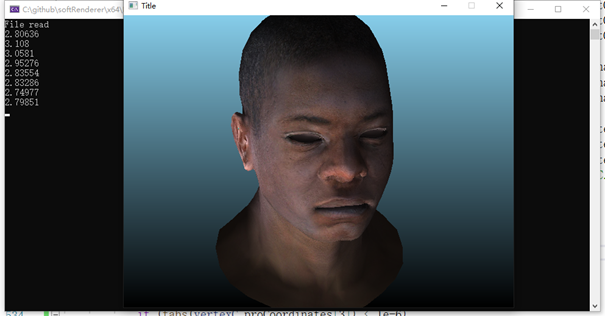I implement a CPU-based software rendering pipeline system from scratch using modern computer graphics theory. The system provides interfaces for image input and output, and is platform-independent. It includes a mathematical template library with various mathematical operations for vectors and matrices, as well as a complete rendering pipeline. During the design process, I implemented a shader interface to facilitate the implementation of additional effects, while ensuring that the code structure is clear and the modules are well-divided, making the system easy to maintain and modify.
Color Shader::FragmentShader()
{
Vector3f l = vector_normalize(light.GetLightV(viewPos));
Vector3f lightIntensity = light.GetIntensity();
Vector3f eyePos = { 10, 0, 0 };
Vector3f h = (l + eyePos) / vector_length_square(l + eyePos);
float ka = 1.f, kd = 1.f, ks = 1.f;
float r = vector_length_square(l);
int p = 1;
Vector3f la = ka * lightIntensity;
Vector3f ld = kd * (lightIntensity / (r * r)) * std::max(0.f, vector_dot(normal, l));
Vector3f ls = ks * (lightIntensity / (r * r)) * (float)std::pow(std::max(0.f, vector_dot(normal, h)),p);
Vector3f L = la + ld + ls;
Color textureColor = texture->GetColor(uvCoord.u, uvCoord.v);
return Color(color.r * L[0] * textureColor.r, color.g * L[1] * textureColor.g, color.b * L[2] * textureColor.b);
}
